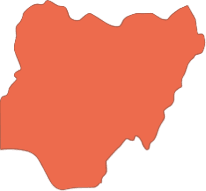
Response overview
Key Figures - 2025 HPC
in need
reached
Objectives
In 2025, the CCCM Sector has identified 2.57 million people in need of assistance and will target 1.4 million IDPs and returnees with the following objectives:
Enhance displacement management in camps, areas of return, and out-of-camp sites to enhance equitable and dignified access to services, assistance, and protection for IDPs through CCCM responses.
Enhance protection for people affected by conflict and natural disasters during displacement while seeking and advocating for durable solutions.
Enhance resilience and improve the ability of communities and local partners to cope with displacement and promote local ownership and self-governance through inclusive participation, gender mainstreaming, and engagement of displaced persons.
In 2025, the Sector will achieve these objectives by following global standards, strengthening community participation and representation, enhancing feedback and complaint mechanisms, recognizing differential and specific needs, site maintenance and risk reduction, implementing a site decongestion strategy, and actively facilitating pathways towards durable solutions, including technical guidance for well-informed site closures and exit planning.
Country synopsis
Nigeria is a Cluster-like Sector response.
In North-East Nigeria, the People in Need of CCCM services for 2025 are 2,573,628 internally displaced persons (IDPs) and returnees living in displacement sites and host communities. These conflict affected families are spread across camps and camp-like settings that often lack basic structures, infrastructure, and services. As the primary point of contact for humanitarian assistance for these displaced families, CCCM will need to continue fostering a multisectoral, people-centered, and rights-based response to ensure equal, safe, and dignified access to humanitarian aid.
Based on current displacement patterns, we anticipate a sustained need for CCCM responses in 2025. This is due to several factors: the existing caseloads in camps and out-of-camp areas where individuals have no other place to go; the anticipated influx of new arrivals fleeing insecurity or hard-to-reach and inaccessible areas; changes in the status of displaced persons from IDPs to returnees (and vice versa) due to voluntary returns or camp closures; and the impacts of climate change (such as floods, droughts, and fires) and economic shocks.
To bridge the gap between available humanitarian assistance and the affected population, CCCM will continue to maintain comprehensive population master lists, identify community needs and gaps, support self-governance, and facilitate appropriate information sharing to demystify humanitarian aid.
Across the BAY states, 934,055 IDPs live in camps, 1,150,008 IDPs reside in host communities, and 2,093,604 returnees are accommodated in 1,551 camps and camp-like settings. The most vulnerable populations, including women, children, the elderly, and persons with disabilities, are disproportionately affected by the crises and should be prioritized in our response efforts. About 23.8% of the IDP sites are on private lands with no formal land tenancy agreements, which in many instances have led to evictions, compromising independent humanitarian assistance, increased protection risks and hindering access, thus increasing the risk of secondary displacement[1].
The planned camp closure targeting IDP sites in Borno State is projected to result in the mushrooming of spontaneous sites around urban and peri-urban areas if done abruptly with no community-led durable solution. Severe weather conditions would trigger secondary and new displacements across the hazard prone LGAs. A projected increase in returnees, new arrivals, and IDPs in host communities would translate into increased demand for in-camp and out-of-camp CCCM responses.
In 2025, there will be a need for adequate camp management systems, that provide site coordination and management, maintain essential services and structures, facilitate community participation and representation, and strengthen community-led discourse around camp exit and durable solutions with CCCM as the first point of contact with the communities.
[1] CCCM Cluster Nigeria 2025 Humanitarian Needs Overview.
Contacts
Irene Mugambwa
Coordinator
[email protected]

